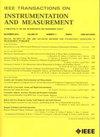通过场景内容感知进行显著性引导的无参照全向图像质量评估
IF 5.6
2区 工程技术
Q1 ENGINEERING, ELECTRICAL & ELECTRONIC
IEEE Transactions on Instrumentation and Measurement
Pub Date : 2024-10-23
DOI:10.1109/TIM.2024.3485447
引用次数: 0
摘要
由于虚拟现实(VR)技术的广泛应用,全向图像(OI)引起了学术界和工业界的极大关注。与自然的二维图像相比,全向图像包含 360^{\circ }$ 次 180^{\circ }$ 的全景内容。\times 180^{\circ }$ 的全景内容,这给无参照质量评估带来了巨大挑战。在本文中,我们提出了一种基于场景内容理解的显著性引导的无参照 OI 质量评估(OIQA)方法。受人类使用分层表示法对图像进行分级这一事实的启发,我们从每个投影视口提取多尺度特征。然后,我们整合纹理去除和背景检测技术,获得每个视口的相应显著性图谱,并利用该图谱指导从低层次特征到高层次特征的多尺度特征融合。此外,受人类理解内容方式的启发,我们利用基于自我注意的变换器来建立非局部相互依赖关系,从而感知每个视口的变形和场景变化。此外,我们还提出了一种内容感知超网络,用于自适应地返回质量回归器的权重和偏差,这有利于理解场景内容和学习质量评估程序的感知规则。综合实验验证了所提出的方法能在两个可用数据库上取得具有竞争力的性能。代码可在 https://github.com/ldyorchid/SCP-OIQA 上公开获取。本文章由计算机程序翻译,如有差异,请以英文原文为准。
Saliency-Guided No-Reference Omnidirectional Image Quality Assessment via Scene Content Perceiving
Due to the widespread application of the virtual reality (VR) technique, omnidirectional image (OI) has attracted remarkable attention both from academia and industry. In contrast to a natural 2-D image, an OI contains
$360^{\circ } \times 180^{\circ }$
panoramic content, which presents great challenges for no-reference quality assessment. In this article, we propose a saliency-guided no-reference OI quality assessment (OIQA) method based on scene content understanding. Inspired by the fact that humans use hierarchical representations to grade images, we extract multiscale features from each projected viewport. Then, we integrate the texture removal and background detection techniques to obtain the corresponding saliency map of each viewport, which is subsequently utilized to guide the multiscale feature fusion from the low-level feature to the high-level one. Furthermore, motivated by the human way of understanding content, we leverage a self-attention-based Transformer to build nonlocal mutual dependencies to perceive the variations of distortion and scene in each viewport. Moreover, we also propose a content perception hypernetwork to adaptively return weights and biases for quality regressor, which is conducive to understanding the scene content and learning the perception rule for the quality assessment procedure. Comprehensive experiments validate that the proposed method can achieve competitive performances on two available databases. The code is publicly available at
https://github.com/ldyorchid/SCP-OIQA
.
求助全文
通过发布文献求助,成功后即可免费获取论文全文。
去求助
来源期刊

IEEE Transactions on Instrumentation and Measurement
工程技术-工程:电子与电气
CiteScore
9.00
自引率
23.20%
发文量
1294
审稿时长
3.9 months
期刊介绍:
Papers are sought that address innovative solutions to the development and use of electrical and electronic instruments and equipment to measure, monitor and/or record physical phenomena for the purpose of advancing measurement science, methods, functionality and applications. The scope of these papers may encompass: (1) theory, methodology, and practice of measurement; (2) design, development and evaluation of instrumentation and measurement systems and components used in generating, acquiring, conditioning and processing signals; (3) analysis, representation, display, and preservation of the information obtained from a set of measurements; and (4) scientific and technical support to establishment and maintenance of technical standards in the field of Instrumentation and Measurement.
 求助内容:
求助内容: 应助结果提醒方式:
应助结果提醒方式:


